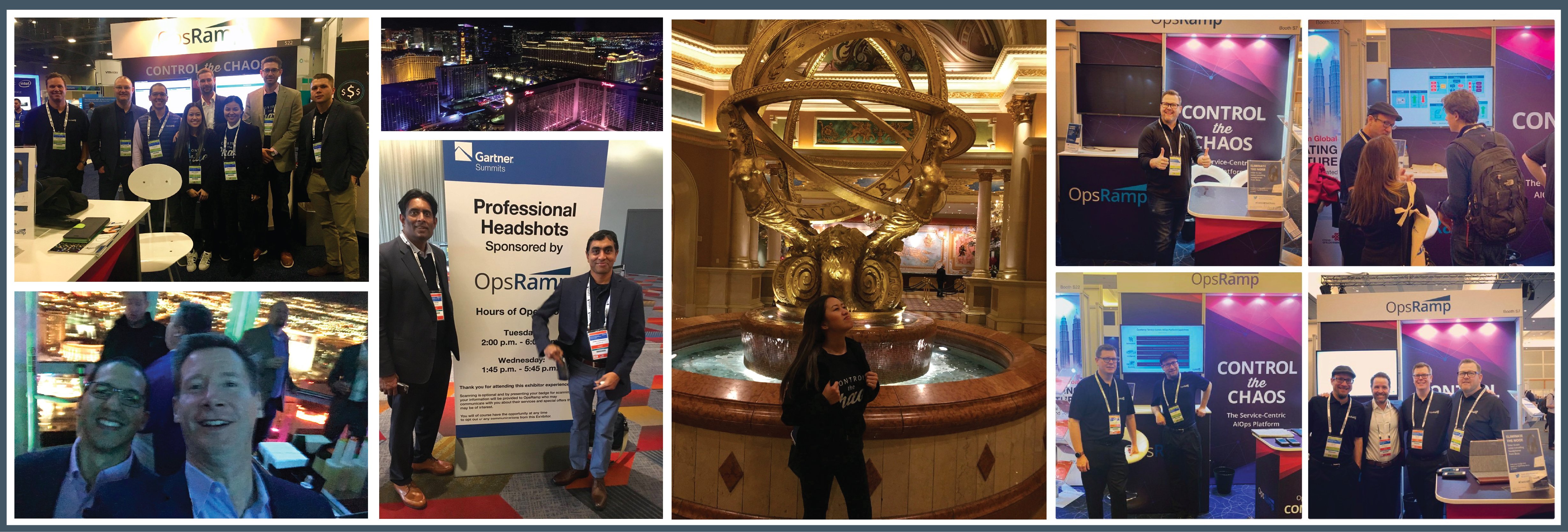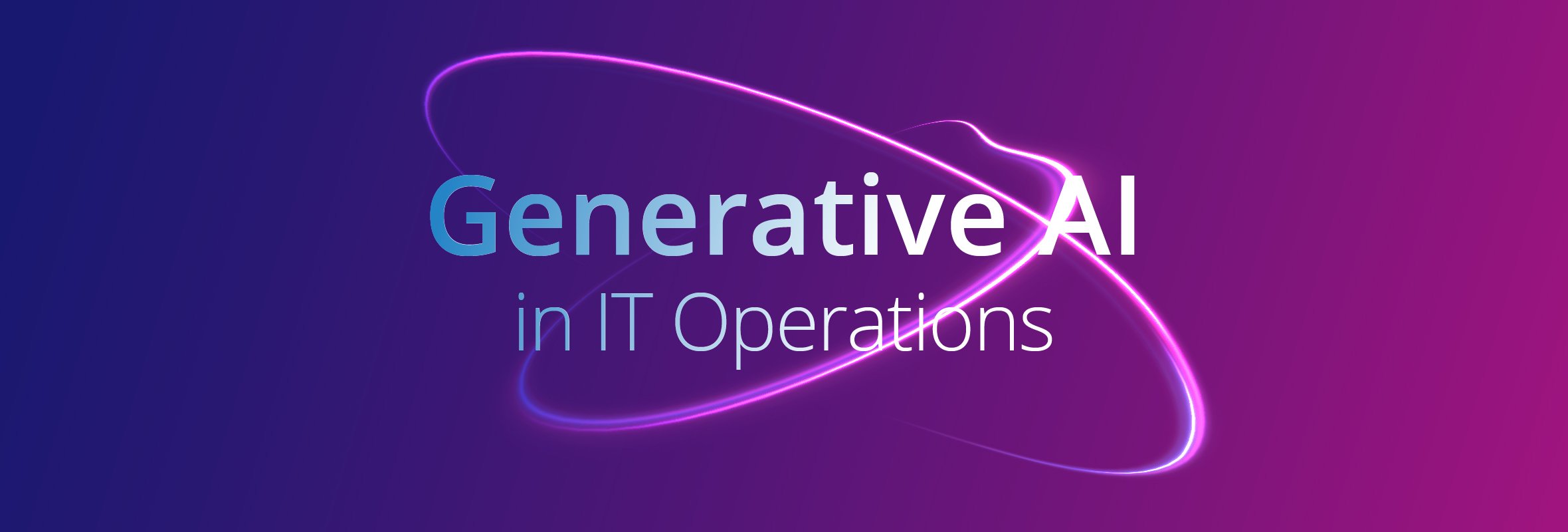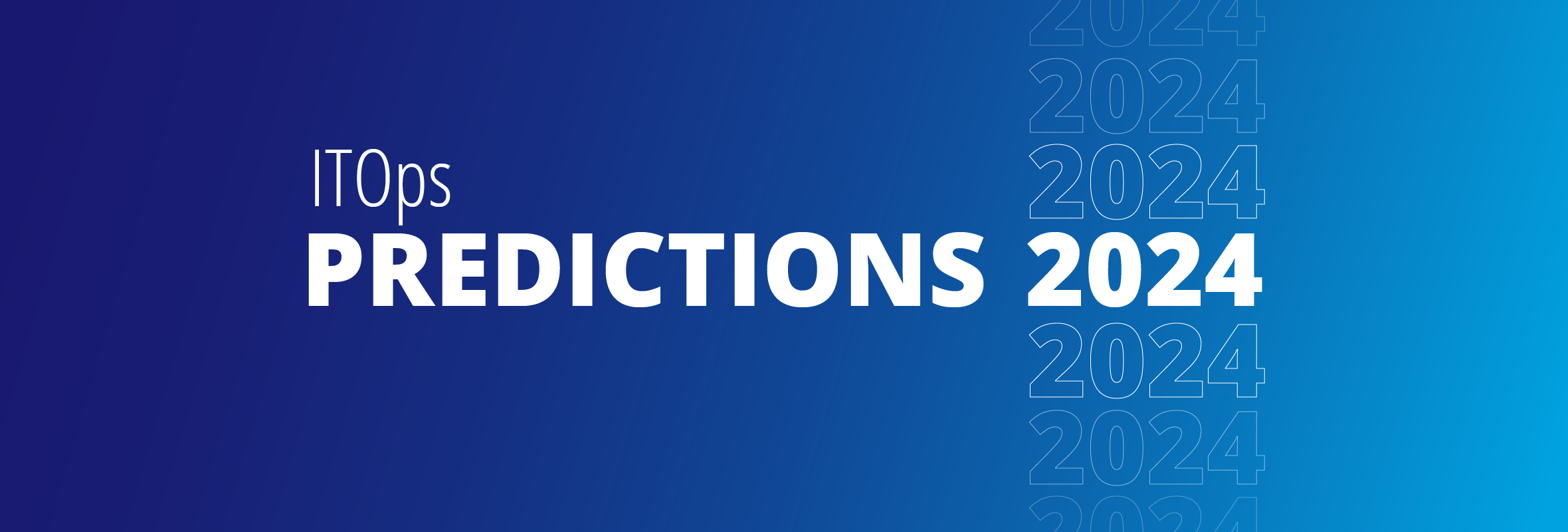Infrastructure Is Everywhere: What’s Your Plan To Control the Chaos?
Last week the OpsRamp team attended Gartner’s IT Infrastructure, Operations & Cloud Strategies Conference in Las Vegas. The week before we were a sponsor at the same conference in London.
|
|
Earlier this year I wrote a summary of the Gartner IT Operations Strategies and Solutions Summit where the key message was: “Be a driver, not a passenger.” Many of the themes have carried forward, but by the end of 2018 there is a greater emphasis on how to manage complexity, automate everything, and build a plan to develop, attract or retain top technical talent for a future where “infrastructure is everywhere.” In this post, I’ll review the highlights and key takeaways I gathered from the show.
Conference chair David Cappuccio kicked off the Vegas conference with some bad news: “Your IT infrastructure today won’t be able to support the business.” Even worse, he noted: “It’s your fault.” Now that had had everyone’s attention, Cappuccio shared the key themes for 2019:
- You want to be out of the datacenter business.
- Demands from the business are growing.
- Demands on your IT infrastructure are growing.
- You need to do more with smaller budgets.
The bottom line heading into 2019? The future of infrastructure is everywhere. You must adapt, rethink your organization (people, process, and technology), and how you achieve this while still keeping the lights on. In the short term, it will be critical to impose order on chaos. In the longer term, it’s all about ensuring agility, moving to a “product orientation,” and partnering with the business to deliver better digital customer experiences.
The key theme at #GartnerIO Las Vegas is that "Infrastructure is Everywhere"#ControlTheChaos #GartnerIOCS pic.twitter.com/3ROS6aVd79
— OpsRamp (@OpsRamp) December 3, 2018
10 IT Infrastructure & Operations Trends For 2019
You can read the press release from Gartner outlining the main messages from the keynote and check out all of the conference action on Twitter. You can also review Gartner’s Top 10 Trends Impacting Infrastructure & Operations for 2019 (hint, serverless and hybrid were just as relevant here as they were the week before at AWS re:Invent). Once you've read all that, check out my key takeaways from the conference:
- AIOps Is Hot And Getting Hotter. In our AIOps Adoption report, we found that 68% of IT decision-makers are piloting AIOps technologies to better manage the availability and performance of business-critical IT services. Every session I attended highlighted the promise and potential of more proactive and predictive IT operations. According to one of the keynotes, AI is now the #1 search term across Gartner’s web properties.
#ICYMI Fascinating insights from #GartnerIO Las Vegas on where #AI and #ML are being used today by IT and I&O. On the same note, have you read our popular report on #AIOps adoption? Here it is - https://t.co/snT9WfFTTJ #ControlTheChaos pic.twitter.com/KrAC7RD05w
— OpsRamp (@OpsRamp) December 6, 2018 - Automate. Automate. Automate. We’re all looking for whatever will get us some time back, improve efficiency, and eliminate human error - automation, analytics, skills, education are always top of the list. There was a session called: Automation Is Imperative to the Viability and Survival of I&O. This slide said it all:

Make IT Automation a priority! #ITAutomation #GartnerIO pic.twitter.com/jNZX1XIx6X
— Patrick Buech (@PatrickBuech) November 27, 2018 - The Cloud Skills Crisis Is Real. In our recent Cloud Skills Crisis report, we found that 94% of IT organizations are struggling to find cloud talent. This year’s conference had an entire track dedicated to leadership and culture. The conversations I had with attendees focused on adopting DevOps practices, like communicating early and often across teams, finding ways to change perceptions, and breaking down organizational silos. And as you scale DevOps, don’t go chasing unicorns - focus on developing (and hiring) versatilists.
As you scale #DevOps don’t go chasing unicorns, focus on versatilists says @gspaff #GartnerIO pic.twitter.com/o1R3j1kwPd
— Darren Cunningham (@dcunni) December 5, 2018 - Hybrid Is Back In Fashion. Perhaps it was due to the AWS on-prem announcement the week before, but there seemed to be a grounded approach to cloud adoption this year. Full disclosure, I’m not a big believer in “bimodal” or “two speed IT” (as we discussed in our Future of IT Ops webinar with Jason Bloomberg). Gartner did stress that the future environment will be hybrid, with increasing activity at the edge.
.@sidnewyork says over 90% of organizations will operate in a #hybrid model. What does that mean? Find out here. #GartnerIO #IT pic.twitter.com/sLMUxNtUMh
— Gartner Events (@Gartner_Events) December 6, 2018 - Get To The Edge. Digital business is going to push your infrastructure to the edge, where things and people connect across a highly distributed computing topology. I found the sessions on this topic to be full of interesting examples. Gartner’s advice on edge computing was quite pragmatic: identify a pilot project and gain experience with topologies, technologies, vendors, and providers based on your specific use case.
Gartner’s definition of Edge Computing.... @tombitt #GartnerIO pic.twitter.com/TuAK7e9KsR
— Kate Keough (@KateKeough1) December 3, 2018 - Guardrails Matter. Digital transformation is increasing the velocity of business and modern IT operations teams will need to balance agility with compliance. Don’t simply provide business owners with self-service infrastructure but also establish a new framework for delivering IT operations as a service. To improve compliance, build the right controls and reduce the odds (and costs) of human error through automation.
At #GartnerIO, the case is being made that infrastructure diversity is imperative for workload performance, compliance, and cost control. #DataCenter #CloudComputing #EdgeComputing #IaaS pic.twitter.com/i5yq3K907W
— Jonathan H. Rosenson (@rosenson) December 3, 2018 - ITSM and ITOM Must Connect. The CMDB isn’t dead, but it sure needs some re-imagining. ITIL and DevOps can co-exist (I think). You need fewer and better alerts with intelligent incident management. And @ken_gonzalez was very busy in Las Vegas. The message here was as much about people as it was technology. I appreciated the emphasis on business services:
Through 2020, 75% of #servicecatalog initiatives will fail to achieve their defined objectives. Gartner’s Ed Holub tells us more. #GartnerIO #ITSM pic.twitter.com/6Q8FMT9SC0
— Gartner Events (@Gartner_Events) December 4, 2018 - Cost Optimization Is Trending. Mindy Cancila kicked off Day 2 with a comprehensive keynote on cloud cost management: Is the public cloud cheaper than my datacenter? Cost saving is always cited as a primary driver of cloud migration, but your savings will depend on where you are on your journey. Gartner’s position is that the public cloud is cheaper, especially when you factor in volume discounts, faster infrastructure sooner, and the ability to unlock innovation. But you need to move the right apps and architect them properly, develop an accurate forecast and model for comparison, and focus on optimization at every step of your cloud journey.
Mindy Cancila (@mcancila) with some great recommendations on managing costs when making the journey from the data center to public cloud. #GartnerIO pic.twitter.com/aZzdCAq6KE
— Equinix, Inc. (@Equinix) December 4, 2018 - It’s Time To Tame IT Monitoring Sprawl. Although Gartner has long proclaimed the need for an integrated IT infrastructure monitoring suite, there is certainly no shortage of point monitoring solutions deployed in the enterprise. In one session poll, over 35% of attendees claimed to have over 30 monitoring tools. It’s definitely time to integrate to consolidate and address tool sprawl, especially if you want maximum value from both DevOps and AIOps.
Love the number of monitoring tools polls myself over 200 respondents and a massive number of tools as expected from @fdesilva session #GartnerIO pic.twitter.com/Ck6Q1wVjZe
— Jonah Kowall (@jkowall) December 6, 2018 - Infrastructure Is Cool. There were lots of practical recommendations for using software engineering practices in digital operations, by automating the heavy lifting of traditional IT management (write once to deploy infrastructure at scale). The key is to create the right culture (borrowing from the world of open source software) and leverage well documented scripts, version control, and access controls. In the hybrid, multi-cloud world, infrastructure as code will be very different from managing on-premises workloads. Infrastructure is now cool, albeit increasingly complex. Are you ready?
Gartner Keynote LIVE from #GartnerIO: The Future of IT Infrastructures https://t.co/UJ5C8CLqYL
— Jason Townsend (@jltok) December 3, 2018
Thanks to Gartner for a fantastic few days. It’s worth noting that there were great sessions on cloud migration, IoT, container management, Kubernetes, security, storage, and many other other topics that I wasn’t able to attend. It was a great conference with tons of content, practical advice, and networking opportunities for attendees.
It’s an exciting time in the world of IT operations and the OpsRamp team is looking forward to helping attendees control the chaos with our service-centric AIOps platform. Be sure to register for our upcoming webinar: Prepare Your Organization for a Cloud World to learn more about our recent Cloud Skills Crisis report and to see a brief demonstration of OpsRamp in action.
Next Steps:- See our service-centric AIOps solution in action.
- Download our Top Trends In AIOps Adoption report.
- Schedule a custom demonstration with a solution consultant today.



.jpg)


